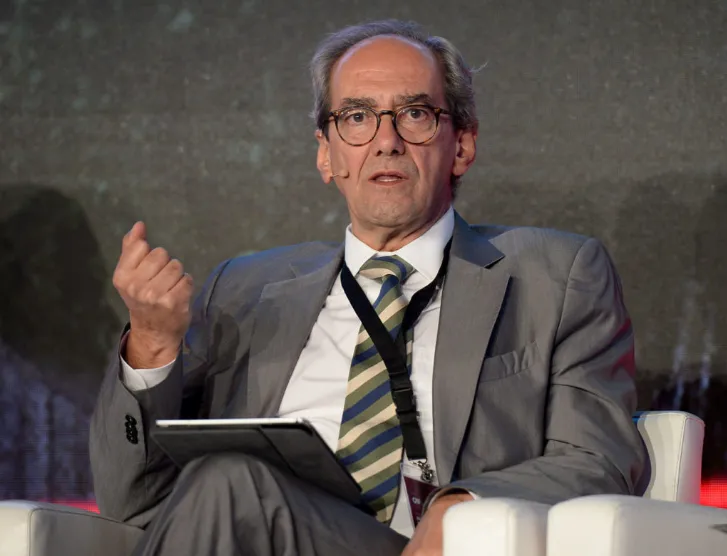'Blockchain' is one of the new technologies with the greatest disruptive force for the financial sector. At the moment, its application in the industry is mainly focused on the underlying technology - DLT (Distributed Ledger Technology) - to create applications or redesign processes, not so much in the creation of cryptoactives. The reason? Blockchain applications have the potential to improve the efficiency, transparency and traceability of processes, while cryptoactives are volatile.
This was explained by José Manuel González-Páramo, executive director responsible for economics, regulation and institutional relations at BBVA, at the Eurofi financial forum, held in Vienna this week. Here he has shared a debate table with Harald Waiglein, Minister of Finance of Austria; Jakob von Weizsäcker, Member of the European Parliament; and Denis Beau, deputy governor of the Bank of France.
The industry follows two major lines of development for applications based on blockchain. The first is related to the transformation of existing processes, especially those that are slow and involve multiple interactions. In general, in these cases, blockchain technology is used in private and collaborative environments, giving rise to initiatives such as R3 or Enterprise Ethereum Alliance, of which BBVA is a part. Some applications that arise from these spaces are used in segments such as cross-border payments or syndicated loans.
In fact, this line is the one that BBVA is exploring the most with the launch of pioneer pilots in the world as the first corporate loan based on blockchain with Indra, the first operation of a line of credit with Repsol or the first electronic presentation of documents in an international trade operation between Europe and Latin America.
The second line focuses on the decentralization of markets and the 'tokenization' of assets. José Manuel González-Páramo has emphasized that this is a field to explore, but to this day, cryptoactives do not provide clear benefits for end users. For the most part, these are speculative products with high price volatility. The BBVA adviser has mentioned that some 'crypto-tokens' are created with the purpose of becoming an alternative digital currency, but so far none of them satisfactorily covers the functions of money.
González-Páramo has highlighted that the so-called 'utility tokens', which grant certain rights to their holders, have real applications still limited for financial institutions. It considers that only certain 'crypto-tokens' could have an interest as a financing mechanism for new companies in the form of ICOs (Initial Coin Offerings). Even so, he has warned of the risks involved in this new form of financing, used mainly by 'startups', which offer 'tokens' or tokens (whether they are rights to use a future service, property titles or assets) in exchange for cryptocurrencies.
In summary, while the benefits of the former are enormous, doubts about the use of cryptoactives, the lack of consumer protection protocols and the risks related to money laundering raise more questions than certainties.
The challenges for regulation
The executive director of BBVA has underlined the work carried out by public authorities that monitor and warn about the implications and vulnerabilities of developments in the cryptoactive markets, particularly warning consumers about their risks.
He has also warned that innovations do not arise in isolation but require an appropriate environment for experimentation. Of all the dissuasive elements of innovation, he has mentioned the regulatory uncertainty as probably the most important one. In this sense, the authorities have the challenge of providing a new regulatory framework that balances the promotion of applications based on blockchain and protection against associated risks, he concluded.